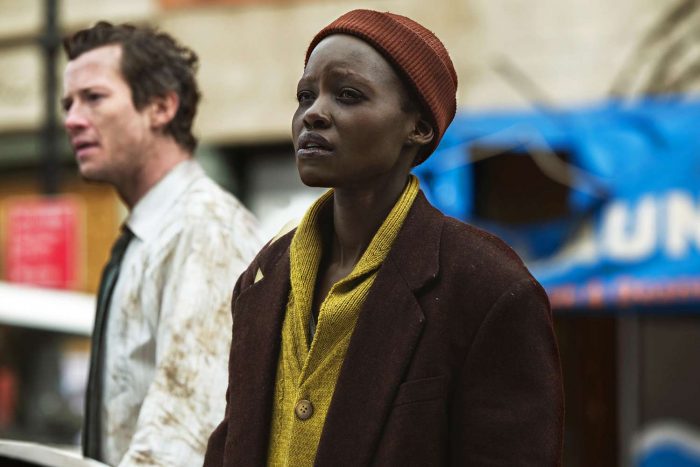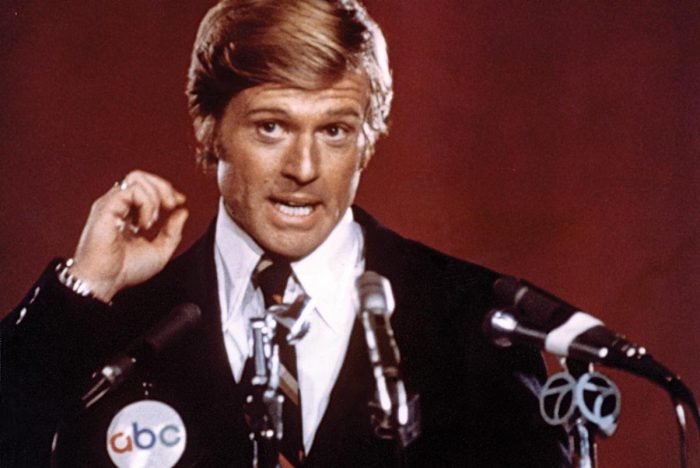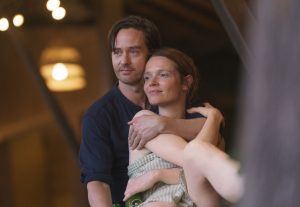By Tim Haggerty & Jeffrey Sanzel
This summer’s movie calendar offers something for everyone, with a great range of genres and a strong blockbuster Hollywood talent.
Inside Out 2
Probably the most awaited summer film is the sequel to the 2015 animated feature. Pixar’s modern classic followed eleven-year-old Riley and her emotional ups and downs from moving to a new city. Now a young woman, Riley is dealing with a host of new feelings, including Anxiety. Original voices Amy Poehler, Phyllis Smith, and Lewis Black join newcomers Maya Hawke, Tony Hale, and Liza Laira.
Rated PG · Release date June 14
Ghostlight
Construction worker Dan (Keith Kupferer) is drawn into the world of a local Romeo and Juliet theatre production, enabling him to bond with his troubled teenage daughter, Daisy (Katherine Mallen Kupferer). A Sundance favorite, the indie drama from directors Kelly O’Sullivan and Alex Thompson, could be this summer’s sleeper hit.
Rated R · Release date June 14
The Bikeriders
Inspired by photographer Danny Lyons’ book on a real-life Chicago biker gang, director Jeff Nichols splits his focus between the gang’s leader (Tom Hardy) and a younger biker (Austin Butler). The cast includes Michael Shannon, Norman Reedus, Boyd Holbrook, Damon Herriman, Emory Cohen, and Toby Wallace.
Rated R · Release date June 21
Twisters
Another entry into the ever-popular weather-related genre. Minari’s Lee Isaac Chung helms the film, promising more than CGI Sturm und Drang.
Rated PG-13 · Release date July 19
Kinds of Kindness
Yorgos Lanthimos’ follow-up to the Oscar-nominated Poor Things features a trio of stories and an all-star cast (Emma Stone, Willem Dafoe, Jesse Plemons, Margaret Qualley, Hong Chau, Joe Alwyn, Hunter Schafer, and Mamadou Athie) each playing multiple roles over the three chapters. Kinds of Kindness will surely feature Lanthimos’s signature heightened reality and disturbing absurdism.
Rated R · Release date June 21
Thelma
Ninety-four-year-old June Squibb is the titular action hero. After being conned in a phone scam, the nonagenarian sets out on a course of revenge, aided by her best friend (the late Richard “Shaft” Roundtree). Parker Posey and Clark Gregg co-star.
Rated PG-13 · Release date June 21
Daddio
Originally conceived by writer-director Christy Hall as a two-hander stage play, Daddio focuses on a woman (Dakota Johnson) and the cabbie (Sean Penn) who drives her from JFK to her midtown Manhattan apartment. What ensues is an informal therapy session that covers everything from the dangers of romance, commitment, and the difference between the sexes.
Rated R · Release date June 28
Horizon: Chapter 1
Kevin Costner directs and stars in this multi-chaptered Western. Subtitled “An American Saga,” the stories view the shaping of the West from a variety of viewpoints, including the forced relocation of indigenous people. Sienna Miller, Sam Worthington, Luke Wilson, Jena Malone, Will Patton, Dale Dickey, and a roster of big names co-star.
Rated R · Release date June 28
A Quiet Place: Day One
In this third installment, the series returns to the alien invasion that began with the 2018 debut. Michael Sarnoski, of the Nicolas Cage thriller Pig, directs the prequel that will most likely explain the space invaders’ presence on Earth.
Rated PG-13 · Release date June 28
Beverly Hills Cop: Axel F
Detroit detective Axel Foley (Eddie Murphy) returns to investigate the death of an old friend. Having just revisited Coming to America, Murphy unsurprisingly returns to the fish-out-of-water Foley, exposing corruption in local police ranks.
Rated R · Release date July 3
MaxXxine
The horror trilogy, which began with X and Pearl, features the lone survivor of the inaugural 1970s-slasher entry. Kevin Bacon, Elisabeth Debecki, Giancarlo Esposito, Bobby Cannavale, Lily Collins, and Michelle Monaghan feature in another outing with deranged killers in the heyday of the infamous Night Stalker.
Rated R · Release date July 5
Longlegs
It Follows’ Maika Monroe is an FBI agent investigating a series of killings that may or may not have some occult leanings; Nicolas Cage is the eccentric who may or may not be solely responsible for the murders. Director Osgood Perkins takes on the familiar federal agent versus the serial killer plot made popular by the Oscar-winning Silence of the Lambs.
Rated R · Release date July 12
Sing Sing
This story focuses on a convict (Colman Domingo) and several felons involved in a theater program designed for occupants of the titular penitentiary. While creating an original production, they find solace in treading the boards. Many of the prisoners are played by real-life former members of the prison-based theater groups.
Rated R · Release date July 12
Fly Me to the Moon
Rom-com meets the Space Race with PR whiz (Scarlett Johansson) and alpha astronaut (Channing Tatum). Best known for his superhero oeuvre, Greg Berlanti directs a cast that includes Ray Romano, Woody Harrelson, and Jon Rash.
Rated PG-13 · Release date July 12
Deadpool & Wolverine
Ryan Reynold’s third Deadpool movie also stars Hugh Jackman as Wolverine, along with Jennifer Garner as Elektra. This Marvel Cinematic Universe/X-Men crossover gives the summer a hyper-doze of superhero power.
Rated R · Release date July 26
Cuckoo
Euphoria’s Hunter Schaefer enters the world of horror with a tale of a family vacation at a Bavarian resort, replete with residents who vomit and walk the halls like zombies. In addition to family drama, the owner (Dan Stevens) adds an additional creepy vibe.
Rated R · Release date August 2
Borderlands
Based on the best-selling videogame, the film follows a group of misfits on the planet Pandora on a mission to save a missing girl who holds the key to unimaginable power. Cate Blanchett, Kevin Hart, Jack Black, Ariana Greenblatt, and Jamie Lee Curtis star in this action-adventure.
Rated PG-13 · Release date August 9
Alien: Romulus
Little has been revealed about this new addition to the Alien franchise except that it occurs between the first and second films. Best of all, Aliens’ creature design team developed the look and feel of this entry’s Xenomorphs.
Rated R · Release date August 16
The Crow
Bill Skarsgård takes on this controversial reboot as a late musician brought back from the dead to avenge the murder of his soulmate. Based on James O’Barr’s comic series, the role is associated with Brandon Lee, and the tragic circumstances surrounding the original 1994 cult movie.
Rated R · Release date August 23
With a mix of comedy, drama, thriller, and pure escape—along with the usual sequels—summer 2024 promises something for every filmgoer.
This article originally appeared in TBR News Media’s Summer Times supplement on June 20.
























